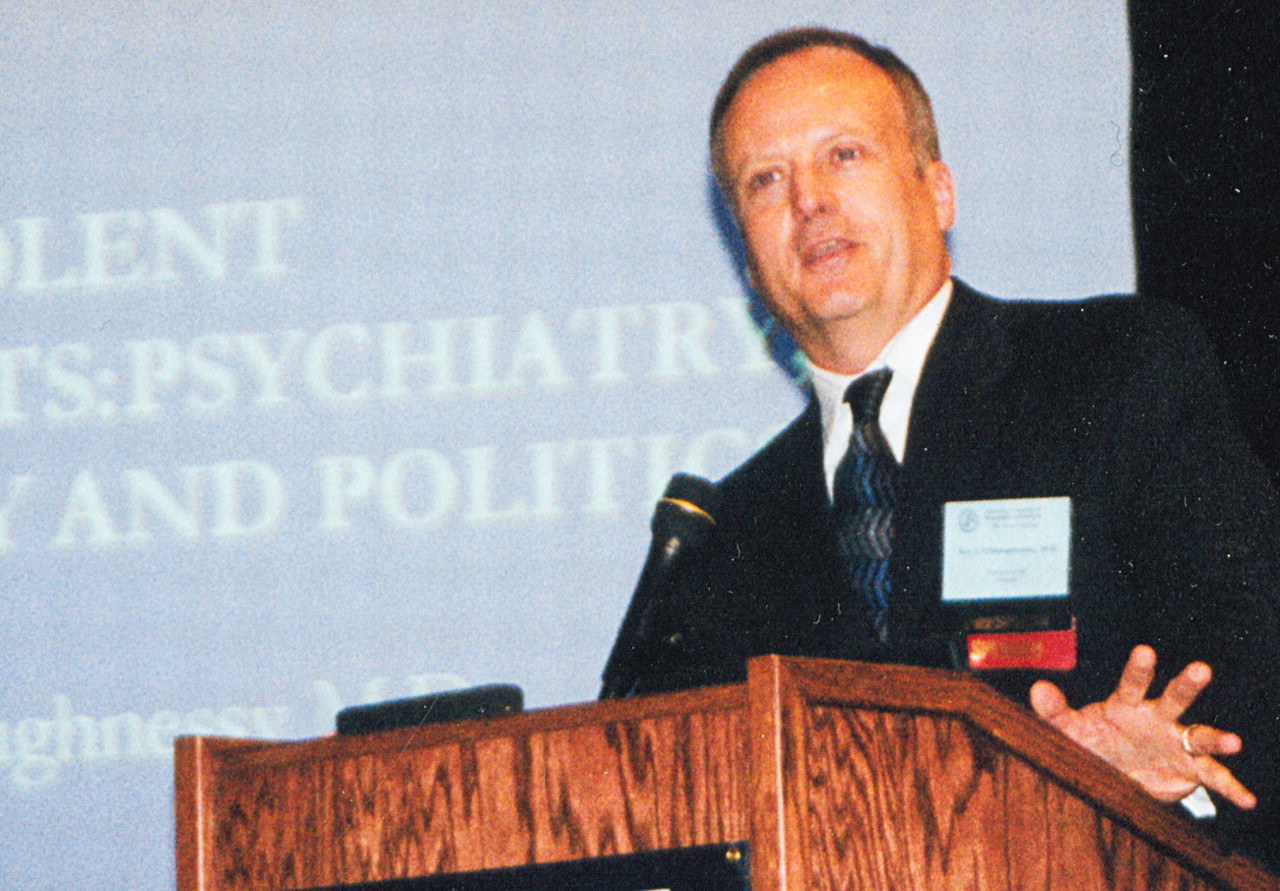Future Not Hopeless For Violence-Prone Youth

Roy O’Shaughnessy, M.D.: “The notion that juvenile crime can be stopped by harsher sentences is a popular political view that has virtually no benefit and no empirical basis.”
That was the message delivered by American Academy of Psychiatry and the Law President Roy O’Shaughnessy, M.D., at the organization’s annual meeting in October in San Antonio, Tex.
Current government policies advocating a “tough on crime” approach can do more harm than good, O’Shaughnessy emphasized.
In recent years, a number of states have adopted policies under which increasing numbers of juvenile offenders are tried as adults, resulting in longer periods of incarceration, he said, and these youth are more likely to be victimized and have higher suicide rates in prison than their adult counterparts.
“The notion that juvenile crime can be stopped by harsher sentences is a popular political view that has virtually no benefit and no empirical basis,” he said.
In reality, most juvenile offenders don’t think about the consequences of their behavior and are “impulsive, short-term thinkers who can’t see past this afternoon, let alone tomorrow,” he explained.
As a group, adolescents who commit violent crimes also commit a high proportion of nonviolent crimes, O’Shaughnessy said, but the majority stop offending by late adolescence.
Violent adolescents also have high rates of mental illness, but “there is no specific psychiatric disorder associated with juvenile violence,” he noted.
One study by Linda Teplin, Ph.D., and colleagues published in the December 2002 Archives of General Psychiatry found that 60 percent of males and 67 percent of females in juvenile detention met DSM-IV criteria for at least one psychiatric disorder, excluding conduct disorder.
But psychiatric illness alone does not, of course, predict violence in youth.
A 2001 National Institute of Mental Health report, “Taking Stock of Risk Factors for Child/Youth Externalizing Behavior Problems,” showed that it is likely the confluence of mental illness with a variety of environmental or psychosocial factors—low socioeconomic status, poor parenting, and association with gangs are some examples—that significantly increases the chances that a young person will become a violent offender, according to O'Shaughnessy.
In 2001 U.S. Surgeon General David Satcher, M.D., Ph.D., reviewed prevention programs for juvenile offenders in Youth Violence: A Report of the Surgeon General and found that certain psychosocial approaches can reduce the number of violent offenses committed by youngsters.
The report identified functional family therapy, multisystemic therapy, and multidimensional treatment foster care as model programs because they successfully reduced arrest rates in juvenile offenders.
The most effective youth violence prevention programs are “targeted appropriately and address several age-appropriate risk and protective factors in different contexts,” according to the report.
Pharmacological interventions in violent youth haven’t been studied as extensively, O’Shaughnessy said, but small clinical trials have shown that neuroleptic drugs are effective in reducing aggression, and mood stabilizers also offer “promising support” in this area.
O’Shaughnessy said mental health staff in many correctional settings are using tools to identify psychopathy, or antisocial behavior patterns, in juvenile offenders, a practice that some consider controversial because such labels can stigmatize youth.
Many view psychopaths as “cold and calloused people,” he noted. He posed two related hypothetical questions: “If you diagnose a youth with psychopathy, does that mean he is untreatable? Can this construct be used to send him to adult court?”
In contrast, early detection of psychopathy in children can provide the impetus for interventions that can help clinicians “reduce exposure to other risk factors and prevent some of the reinforcement of antisocial values,” thus preventing further violence, O’Shaughnessy said. ▪



